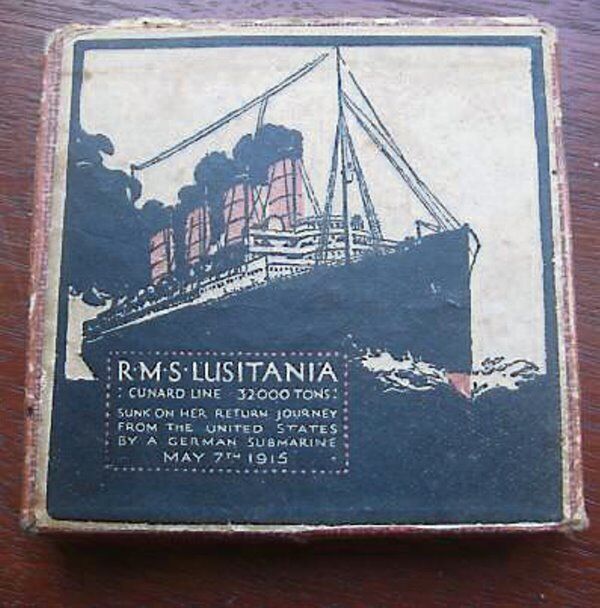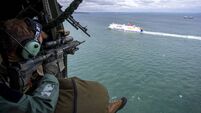Memorabilia: Ship’s artefacts still thrill avid collectors

The most important shipwreck after the Titanic is the Lusitania, due to its controversial sinking during World War I. Unlike the 100th anniversary of the sinking of the Titanic, when auction houses competed at the highest level, very few serious Lusitania artefacts became available for auction.
Most serious maritime collectors would give their right arm to own a true piece of the Lusitania, although anything directly associated with this ill fated ship is highly collectable. In 1967, John Light successfully purchased the wreck of the Lusitania for the sum of £1,000 from the War Risk Association of Liverpool. Subsequently, it was purchased by Gregg Bemis. To-date, his involvement with Lusitania has been estimated at €5m.
Find more content related to the sinking of RMS Lusitania in our special report
The sale of objects salvaged from the Lusitania have always been very controversial. Gregg Bemis salvaged the ship’s bow, three brass propellers and two bow anchors, as well as thousands of other items such as clocks; 8,000 spoons embossed with the head of General Kitchener and crockery that included a complete dinner service bearing the name Cunard.
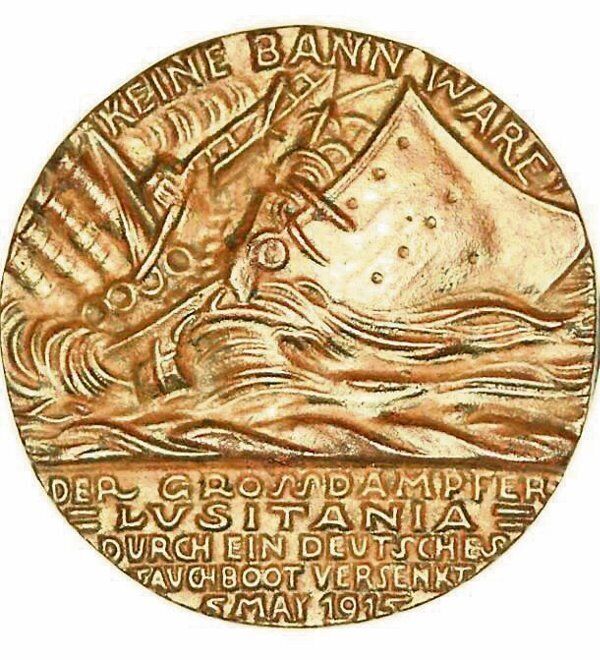
In 1982, the artefacts were landed at Pembroke in Wales and Montrose in Scotland. They were then seized by the British Receiver of Wrecks. At that stage, it fell to the British Government to challenge his claim to the objects. Bemis was successful and Merseyside Maritime Museum purchased one of the propellers for £20,000.
Cobh Heritage Centre wanted to purchase another propeller, but could not raise the money. A Saudi oil magnate purchased the second propeller and, grotesquely, the third was melted down to make a personalised set of golf clubs for an American millionaire. Sotheby’s auctioned the ship’s bell for £10,000 and the ship’s whistle for £4,000.
The ship’s bell is on display at the Imperial War Museum. Unfortunately the auction did not realise a fraction of what was expecte; no further Lusitania objects were placed on the market.
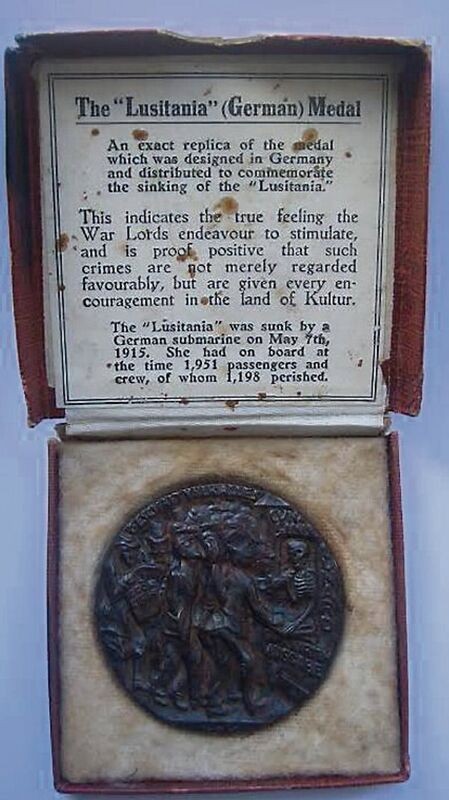
A watch owned by Frank Holman a waiter on board the doomed ocean liner which stopped when he plunged into the Ocean has been valued at around £1,000. He was reportedly wearing the watch when the liner was hit by a German torpedo.
Upon hitting the water, his watch stopped immediately revealing the time of entry.
Mr. Holman’s daughter took the item to the BBC’s Antiques Roadshow where expert Hillary Kay said: “Lusitania artefacts have appeared on the market in the past, and they always create a stir, particularly in The United States. However, despite the obvious value of the watch, Ms. Wiffen stated that she does not want to sell the item, because of its great sentimental value. On rare occasions the object itself can be virtually worthless, but its historic significance can add a new dimension creating an altogether different value.
The most readily available item associated with the Lusitania is a British propaganda copy of a German medal issued to mark the sinking of the Lusitania off The Old Head of Kinsale, Co Cork; on 7 May 1915 (the medal is incorrectly dated “5 May”).
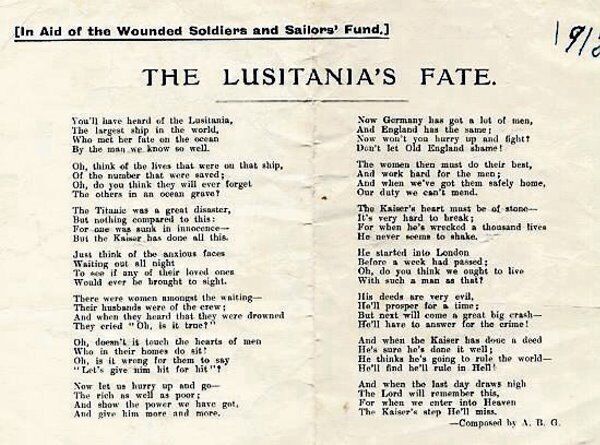
The liner Lusitania, sunk by German submarine May 5, 1915, provides perhaps the most obvious example – as in actual fact the sinking occurred on 7 May. The discrepancy in date may have been a genuine error but it was interpreted as a being a clear indication that the sinking was pre-planned and not just one of the fortunes of war. British propagandists made the most of their opportunity to discredit Germany.
The obverse of the medallion shows the ship sinking with weapons piled up on its decks. “KEINE BANN WARE” (“NO CONTRABAND”), and the reverse shows a skeleton selling tickets for Cunard to a queue of passengers inscribed “GESCHAFT UBER ALLES” “BUSINESS ABOVE ALL”). These were originally sold for a shilling each at Selfridge’s in 1916 with proceeds going to the Red Cross and St Dunstan’s Blinded Soldiers’ and Sailors’ Hostel. 250,000 copies were produced many of the British copies are readily found today. As for the German version these are very rare and extremely valuable.
Everyday items such as menus from the RMS Lusitania, ie a Breakfast Menu card from Friday, July 22, 1910 featuring fruit, oatmeal and porridge, soft shell crabs, eggs “boiled, fried, turned, and scrambled to order”, sirloin steak, sheep’s kidneys, pressed beef, York ham, white and graham rolls, soda scones, Scotch oat oakes and Ceylon, China and Blended teas, coffee and cocoa were among some of the copious and hearty offerings and are estimated at between €600-€1000. Auction estimates for engraved invitations to parties on board the Lusitania in 1906 and 1907 range from $600 to $1,500 each.

I am very fortunate to own several original Lusitania postcards, a Lusitania poem dated 1915 and a British propaganda medal in its original box estimated at between €80-€100.
Scarce relics do come up for auction from time to time, Swann Auction Galleries recently appraised a rare Cunard Lusitania poster created prior to its launch in 1907 at between $12,000 and $18,000.
What specialist collectors focus on nowadays are the crème de la crème pieces such as a 37.5-inch replica of the ill-fated Lusitania, which was the star lot in an auction of antique toys collected by the late Malcolm Forbes and his sons (see below).

The replica sold for $194,500 at Sotheby’s in New York in December 2012 setting a record for a toy boat at auction. At the Adams and Mealy’s Independence sale on April 15, 2008, lot 617 featured the original Cunard office records in relation to the voyage of the Lusitania departing May 1, 1915. Documents included the berth list, saloon plans, cargo manifest and the final return of passengers and crew including a record of bodies recovered. The Irish Government purchased these priceless items for a mere €15,000, their lowest estimate.
In a further twist to the Lusitania story it has been claimed that Sir Hugh Lane, the director of the National Gallery of Ireland who was lost during the sinking, had with him on board paintings estimated at $60 million, including works by Rubens, Titian and Monet. Legend has it that Lane had a premonition of a disaster and had the paintings shipped within special sealed lead and zinc tubes to protect them from the perils of the sea.
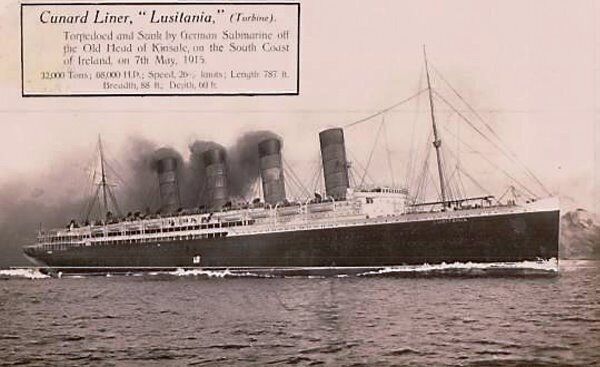
Incidentally the ships manifest records a case containing an oil painting measuring 22ft by 13ft.
After speculation that containers matching this description had been seen on the wreck, the Irish government took the situation seriously enough to ban diving at the site entirely in 1995.
